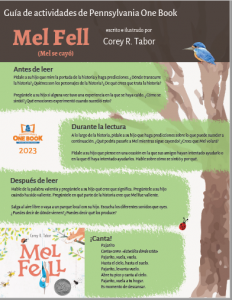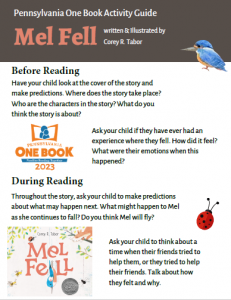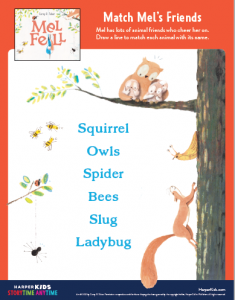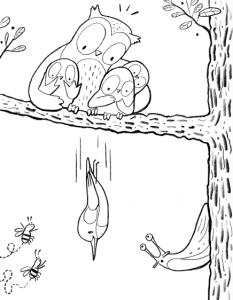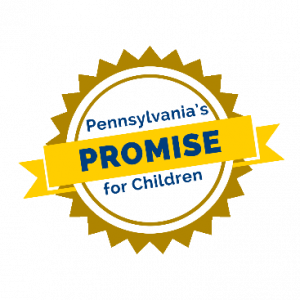PA One Book Activities for Mel Fell
VIDEOS:

CCTL PA One Book Storytime
PA One Book Storytime with Amanda Nobilt, Youth Services Librarian, Columbia County Traveling Library Authority.
Ms. Robin PA One Book Circle Time
PA One Book Circle Time with Robin Mercuri, Family Development Specialist, Steel Valley Family Center.
Keep the learning and fun going throughout the summer! Family engagement can improve cognitive development and promotes social-emotional development in children. Join us on an adventure to our State Parks and local libraries filled with activities, games, and learning opportunities at the Pennsylvania’s Promise for Children Summer Learning and Literacy Road Trip! Each week, learn about a different library, get book recommendations, and find fun activities to do at a Pennsylvania State Park. All activities align with the PA Early Learning Standards and can be done anywhere.
This year’s PA One Book, Mel Fell, is also included on The Pennsylvania Center for the Book’s A Baker’s Dozen. A Baker’s Dozen is a nationwide, annual initiative to screen over 2,000 picture books each year with the goal of identifying the top 13 that fulfill the goals of family literacy programs for preschoolers.
BEFORE READING:

Tell children that you have a very special book to share with them today! Before reading, have a conversation to introduce the story, develop background knowledge, and set a purpose for listening:
The author and illustrator of this book is Corey Tabor, and his book won a medal (show cover with Caldecott Medal) for the wonderful pictures! The title is Mel Fell and here is Mel right on the cover. Do you know what kind of creature Mel is? That’s right, she’s a bird, a particular kind of bird called a kingfisher. Now, when you think of birds you don’t usually think of them as falling, do you? What do birds do? That’s right, birds fly. So, we’re going to read Mel Fell to find out why she’s falling and not flying!
Now, there is something unusual about this book that you’re going to notice right away. Look how I’m holding it on its side. That’s not how you usually hold a book, is it? (Model briefly how you usually hold a book and turn the pages with another picture book.) Mr. Tabor, remember he is the author and illustrator, decided to create his book differently, and I think you’ll see why when we read the story. So, now let’s read Mel Fell!
Have children look at the cover of the story and make predictions. Where does the story take place? Who are the characters in the story? What do you think the story is about?
DURING READING:

Pick a few points in the story to engage the children with questions, actions, and making predictions.
For example:
Pages 5-6
Text: “See you soon!” she told her siblings. She jumped. She flipped. She spread her wings. And then…she fell.
Uh, oh! Mel started out well, but now she’s falling! Look at the picture. Tell me what you think brother and sister are feeling? Why do you say they feel that way? That’s right, they’re hiding their eyes with their wings. They’re scared to look, aren’t they? Let’s see what happens!
Pages 13-14
Text: Even the spider lent a hand. (Eight of them.)
Look, the spider has her tail! Do you think she will stop her fall? Why or why not?
Pages 21-22
Text: Mel dived into the water. She snapped her beak and caught a fat little fish.
(turn the book! this way)
She kicked her legs. She wiggled her tail feathers. She spread her wings. And then…
It looks like Mel was falling on purpose! She was really diving to catch a fish! What do you think will happen now? Let’s turn the page and find out! We’re going in a new direction now…
Pages 27-28
Text: As Mel flew by, the spider clapped her hands. All eight of them.
That’s nice of the spider to clap for Mel. Let’s clap for Mel, too! Yay, Mel!
Throughout the story, children make predictions about what may happen next. What might happen to Mel as she continues to fall? Do you think Mel will fly?
Ask your child to think about a time when your friends tried to help you, or you tried to help your friends. Talk about how they felt and why.
AFTER READING:

Discuss the word bravery and ask the children what they think it means. Ask the children when they have been brave. Ask when in the story do they think Mel was being brave.
Besides Mel, what character in the book did you like the best and why?
Go outside or to a local park. Close your eyes and listen to the different sounds you hear. Can you tell where they are coming from? Can you tell what is making those sounds?
SING IT!

Little Bird
Sung To: “Twinkle, Twinkle, Little Star”
Little bird, little bird, fly around,
Up to the sky, down to the ground.
Little bird, little bird, flap your wings.
Open your beak and sweetly sing.
Little bird, little bird, fly to your nest.
Now it is time to take a rest.
Five Little Birds
Five little birds in a nest in a tree
(hold up right hand)
Are just hungry as can be
“Peep”, said baby bird number one
(wiggle one finger)
Mother bird promised she would come
“Peep, Peep”, said baby bird number two,
If she doesn’t come, what will we do?
“Peep, Peep, Peep”, said baby bird number three,
I hope she can find this tree.
“Peep, Peep, Peep, Peep”, said baby bird number four,
She never was so late before.
“Peep, Peep, Peep, Peep, Peep”, said baby bird number five,
When will our mother bird arrive?
Well, here she comes to feed her family
(use left hand as mommy bird)
They’re all as happy as can be!
MAKE IT!
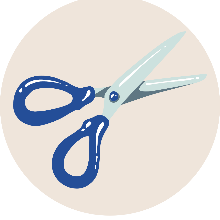
Round Cereal Lacing Bird Feeders
Kingfishers are carnivorous. They eat mostly fish and crustaceans. Other birds eat seeds. We are all unique in what we like to eat. Do you have friends that like meat (carnivorous), or are vegetarians?)
Cheerio and Pipe Cleaner Bird Feeders- Great, simple activity that nurtures fine motor skills with lacing. This two material bird feeder is budget friendly, and then they can hang right up on the tree.
Materials Needed:
Pipe cleaners
Round Cereal
Twist ties (optional)
Nature Scavenger Hunt and Pinecone Bird Feeders
Soynut Butter, Pinecone and bird seed bird feeders. Cover the pinecomb with peanut butter (or soybutter for a variation), place it in a large ziplock bag. Scoop a cup of birdseed in the bag, and shake it until the seeds cover the pinecomb. If you are near a park, or outdoor area, try going on a nature scavenger hunt to gather your pinecones first.
Materials Needed:
Pinecones
Bird seed
String or Twine
Peanut Butter or Soy Butter
Plastic Knives
Clothespin Bird Puppets
Using spring loaded clothespins is a great way to develop children’s fine motor skills to develop the muscles in their hands that they need to become writers. These delightful puppets are also a great way to extend dramatic play and language development through retelling part of the story, or having children make up their own. Be sure to make a clothespin puppet alongside your child, so you can act them out, and engage in storytelling together at home.
Materials Needed:
Spring Loaded Clothespins
Glue
Scissors
Felt or colored paper
Feathers
Markers
Sticker eyes, or googly eyes
Bird Watching Binoculars
Materials Needed:
2 empty cardboard tubes
Glue or tape
String, yarn, or ribbon
Decorating supplies, such as markers, crayons, stickers or tissue paper (optional)
Instructions:
Attach the cardboard tubes together with glue or tape. If you want to be able to wear your binoculars around your neck, you can add a strap. First cut or poke a small hole on the outside edge of each cardboard tube. Tie on a piece of yarn, ribbon, or string to make a strap. Decorate your binoculars however you choose! You can paint them, color them with crayons or markers, collage with paper scraps, cover them in stickers. There is no wrong way to do this step!
(STANDARD AREA(s): Creative Thinking and Expression – Communication Through the Arts)
Paper Bag Nest
Turn a paper bag into a bird’s nest in a matter of seconds! An easy paper bag craft to go along with a kids’ bird craft. Perfect for Easter crafts and nature crafts at home or in the classroom.
(STANDARD AREA(s): Creative Thinking and Expression – Communication Through the Arts)
Additional Activities Aligned to Early Learning Standards
APPROACHES TO LEARNING THROUGH PLAY – CONSTRUCTING, ORGANIZING, AND APPLYING KNOWLEDGE
- Mel took a risk by trying to fly when she has never done that before. What kind of risks have you taken? What are some new things that you want to try and explore?
- Visit your local park or a state park to find more information on the different animals and their natural habitats while exploring the different experiences parks have to offer.
LANGUAGE AND LITERACY DEVELOPMENT – ENGLISH LANGUAGE ARTS
- Throughout the reading of the story, have children make predictions about what is coming next. Have the children think and share what animal and what day of the week may be coming next in the story.
- Have children brainstorm ideas of other animals that could be found in nature. Where would they be found in nature? Why? Write this list down for children to see.
MATHEMATICAL THINKING AND EXPRESSION – EXPLORING, PROCESSING, AND PROBLEM-SOLVING
- Shapes can be found anywhere. Have children refer to different pages in the book and identify the different shapes that can be found.
- Have children collect different items from nature. Talk about where each item was found. They can sort these items into different groups based on attributes, and then count how many items they have in each group.
SCIENTIFIC THINKING AND TECHNOLOGY – EXPLORING, SCIENTIFIC INQUIRY AND DISCOVERY
- Using the Internet or available reference books, look deeper into the characteristics of squirrels, spiders, slugs, kingfishers, and other characters in the story. How do the traits of each character affect the way they respond to Mel when she falls or flies by?
- Attract wildlife visitors by scattering birdseed or creating a bird feeder filled with bird seed. Provide a journal for children to write or draw the visitors they see each day.
- There are many living and non-living items found in a park. Explore the difference between the two and talk about how plants and animals grow and change.
- Go on a nature walk outside and have children collect different items. Come back to the classroom and have children investigate and identify the items they have found using a microscope, tweezers, etc.
SOCIAL STUDIES THINKING – CONNECTING TO COMMUNITIES
- Mel’s home is in a tree, but she is not the only one who lives there. Who else lives in Mel’s community? How did the different members of Mel’s community try to help Mel when she was falling?
- Have children describe the physical characteristics of where this story may have taken place. What are some other physical features of nature?
CREATIVE THINKING AND EXPRESSION – COMMUNICATING THROUGH THE ARTS
- Create the different sounds made by the animals by using different types of music instruments.
- Have children recreate the story using dramatic play for an audience.
HEALTH, WELLNESS, AND PHYSICAL DEVELOPMENT – LEARNING ABOUT MY BODY
- Using stuffed animals, picture cutouts, or imagination, play hopscotch as though you are Mel falling down and then flying up the tree. Starting at the top of the tree in the nest, children and adults can hop through the sequence of the story: owls, squirrels, bees, spiders, and slug. When they reach the water, they can grab their fish and turn around, then hop back toward the top, naming the friends they pass as they go.
- Discuss the health benefits of participating in physical activity outdoors for your body. Encourage children to think of their favorite activities to do outdoors.
SOCIAL AND EMOTIONAL DEVELOPMENT – STUDENT INTERPERSONAL SKILLS
- Ask children if they can recall how Mel felt when she was about to fly. How do you think you would feel if you were Mel?
- Talk about how the animals tried to help Mel as she was falling. What are some things your friends or family members help you do?
PARTNERSHIPS FOR LEARNING – FAMILIES, EARLY CARE AND EDUCATION PROGRAMS, COMMUNITIES
- Encourage families to explore nature and libraries around them. Help make them aware of the benefits of getting children outdoors.
- Nature I spy activity

